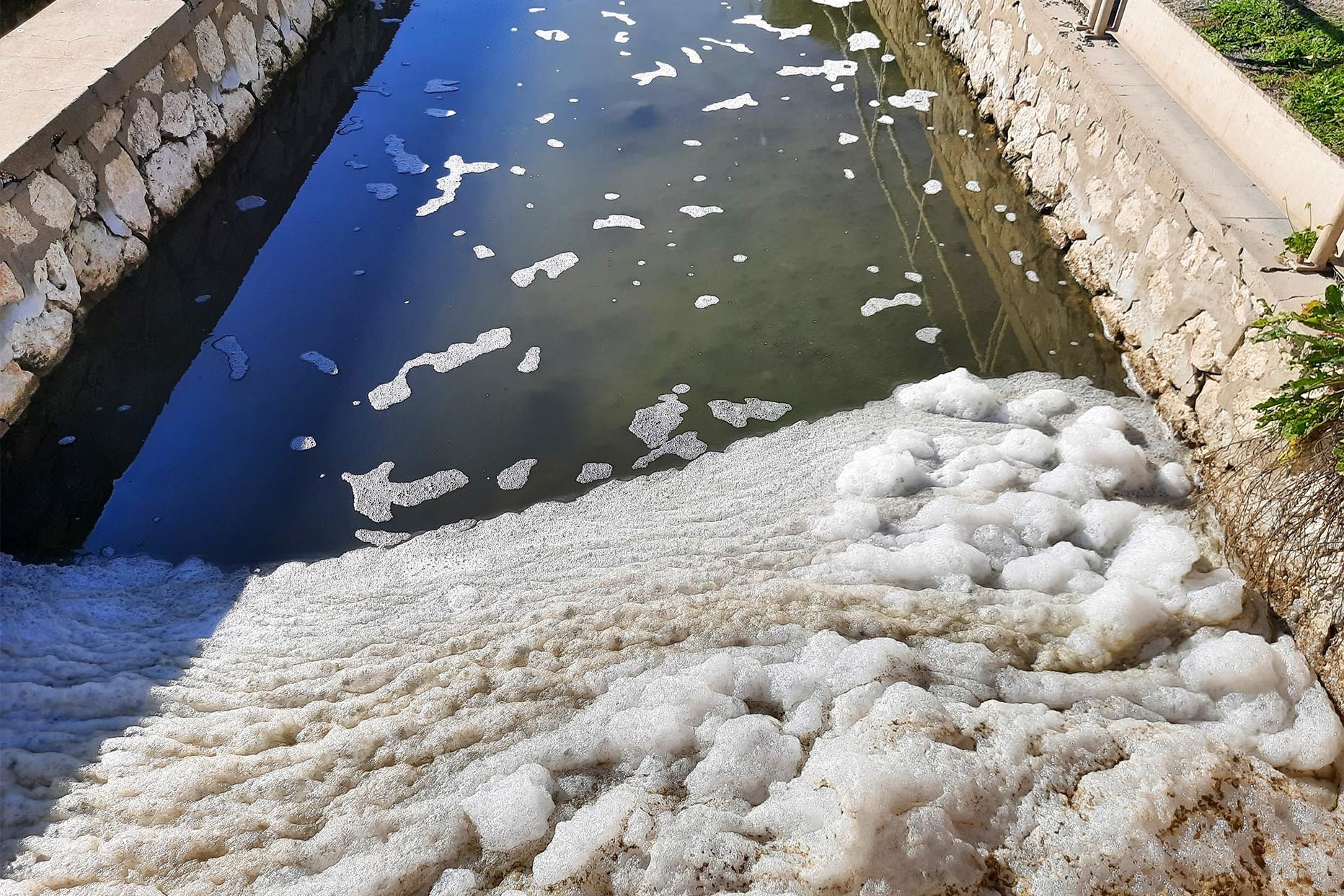Emergency removal of foaming agents from waste water
Foam in waste water is a highly visible form of surfactants pollution, and can cause public alarm and incur penalties if discharged into natural watercourses. Several surfactants commonly used in the chemical industry can cause foam. DESOTEC has extensive experience in treating waste water to remove foaming agents and other forms of surfactants pollution. In emergency situations, our solutions can be delivered and installed swiftly, averting or minimising expensive shutdowns in the chemical industry.
The problem
A chemical company produces inorganic compounds to make food industry additives at its factory in Italy.
Its waste water is usually not badly polluted, and requires only physico-chemical treatment to remove inorganic compounds before it can be safely discharged to the local watercourse. There is no need to treat the limited amount of harmless organic components it contains.
However, during the summer of 2020, the company found unexpected foam in the waste water.
It was not sure why this problem had suddenly arisen, and knew only that it was caused by surfactant compounds at a concentration of 15-20 mg/L. These do biodegrade, but only at a slow rate. Therefore, they are subject to strict limits: in Italy, this is typically 10 mg/L, but limits can vary for specific companies.
The company knew that discharging this foaming water to the river would cause public alarm and lead to emergency action from the environmental authorities.
It therefore had to shut down its plant and store around 500 m³ of contaminated waste water while its engineers looked for emergency solutions. A simple internet search led them to DESOTEC.

The solution
The company phoned DESOTEC on a Friday morning and discussed the situation with our Italian sales manager. Like all DESOTEC sales managers, he is also an engineer.
In less urgent situations, we would most likely carry out lab tests on waste water samples to ensure we could deliver the optimum filter set-up. However, in an emergency, our engineers have the expertise to propose an immediate, effective solution that can be tweaked later if necessary.
Much of DESOTEC's experience in treating surfactants pollution comes from working with companies in the chemical industry that have biofilters installed to treat organic compounds. In these cases, activated carbon can be installed after the biofilter as a polishing step to remove the residual surfactants. Although this Italian company did not have a biofilter on site since organic pollution is only limited, the principle to remove surfactants is the same.
Our sales manager was able to draw upon his extensive experience of dealing with surfactants pollution, and was confident that our filters would be able to treat the foaming agent.
The company placed the order that afternoon. The very next morning, we delivered a MOBICON filter from our hub in Italy. We also supplied eight tonnes of macroporous activated carbon, which is best suited to adsorb larger organic components.
The client started the filtration process on Saturday afternoon, treating a flow rate of 10 m³/h. It was quickly satisfied that the filter was removing the foam effectively from the waste water.
Production was able to resume at the factory on Monday morning.
The results
The client was so pleased with DESOTEC's service and solution that it has kept the MOBICON filter as a safeguard in case of another emergency.
Tests later revealed that the surfactant compound that had caused the foam was Arabic gum, a foaming agent widely used in the food industry. The client has now installed two further DESOTEC filters, our MOBICON 2000 models, to treat this organic pollutant.
The client was delighted with how quickly we were able to respond. Our network of European hubs makes it possible to deliver filters and large volumes of carbon at very short notice in emergency situations.
In all our projects, once the carbon is spent, recycling it is part of our service. Clients do not handle the waste carbon themselves. Instead, it is transported in closed filters safely to our site in Belgium, where we test samples to determine how to store and treat it. All molecules that were adsorbed onto the filters are desorbed in our reactivation furnaces, then destroyed in an incineration and neutralisation set-up in accordance with national and EU legislation. The entire installation and its emissions are under continuous online monitoring, which guarantees that only harmless water vapour exits the chimneys.
Contact our experts
If you have an emergency pollution problem at your site, contact our team of engineers today.
Contact our expertsContact our experts
If you have an emergency pollution problem at your site, contact our team of engineers today.
Contact our experts-
Water & liquid purification
Our mobile filtration solutions purify wastewater and groundwater, and ensure process liquids reach high purity standards. -
Our unique service
Our closed-loop, full-service model is as unique as your business needs. We’ll define the right filtration setup and safely recycle filtration waste, making it easy to go green. -
Your sustainability journey
We care about protecting our air, water and soil for future generations, just like you. Our filtration solutions help you meet environmental standards, reducing your carbon footprint.


